The Architectural Ceramic Assemblies Workshop (ACAW), now in its eighth consecutive year, has reached a newfound level of complexity and interdisciplinary collaboration. Hosted by Buffalo-based manufacturer Boston Valley Terra Cotta, the Carnegie Mellon University School of Architecture, and the University at Buffalo School of Architecture and Planning, the weeklong event offers participating architecture and engineering firms, as well as students, an opportunity to hear from several speakers and to get their hands dirty designing and putting together terra-cotta facades and other architectural elements under the watchful eyes of the specialists.
Speakers, some of whom were also workshop attendees, included Eric Parry, principal of London-based Eric Parry Architects; Dutch glaze artist Christine Jetten, John Krouse, CEO of Boston Valley Terra Cotta; and Orel Samson, senior manager of Allied Properties REIT.
“While the themes and designs vary from year to year, exploring concepts in sustainability, reducing solar gain and embodied carbon, or the attributes of glaze, this year’s focus on biophilic solutions underscores terra-cotta’s value in the future of high-performance facades,” Krouse told RECORD. “After eight years, we look forward to architects’ continued appreciation of the flexibility and functionality of constructible terra-cotta systems.”
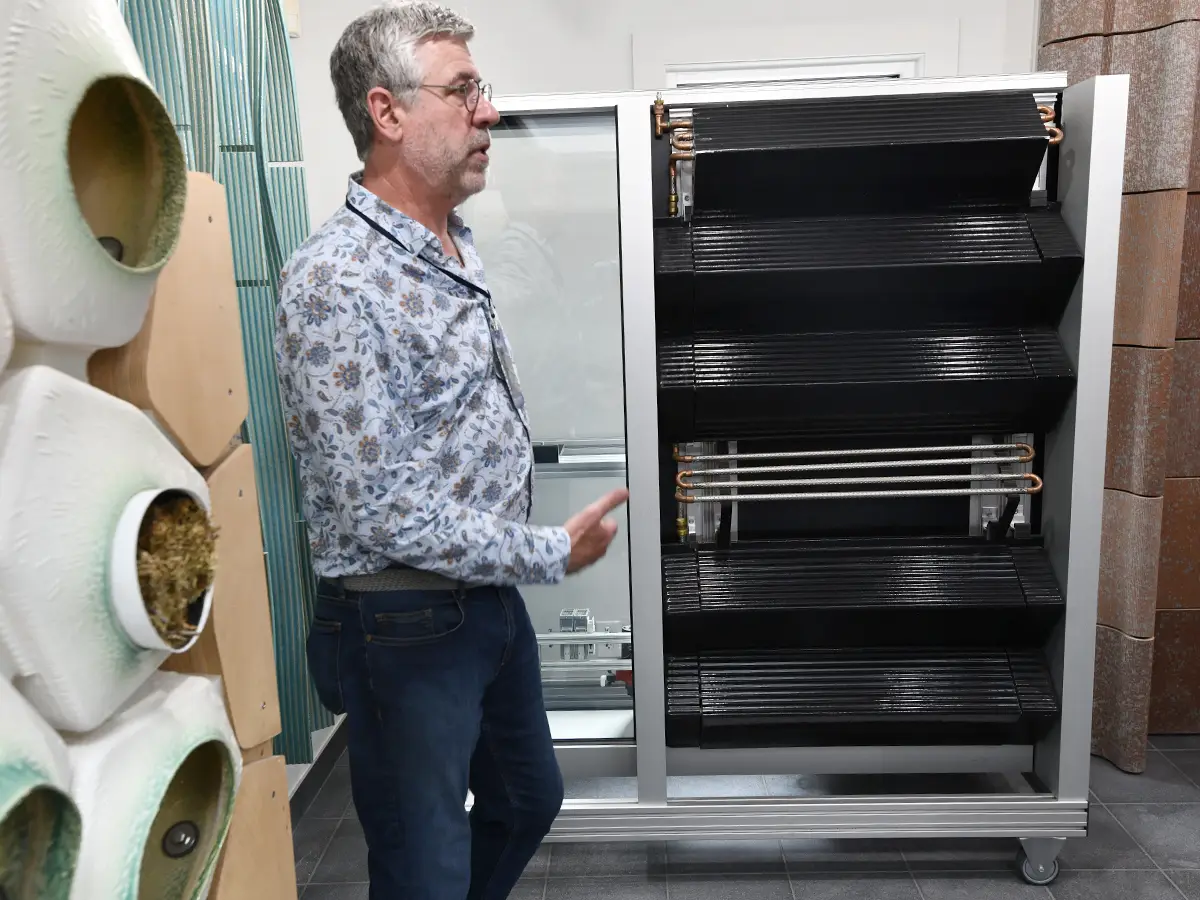 1
1
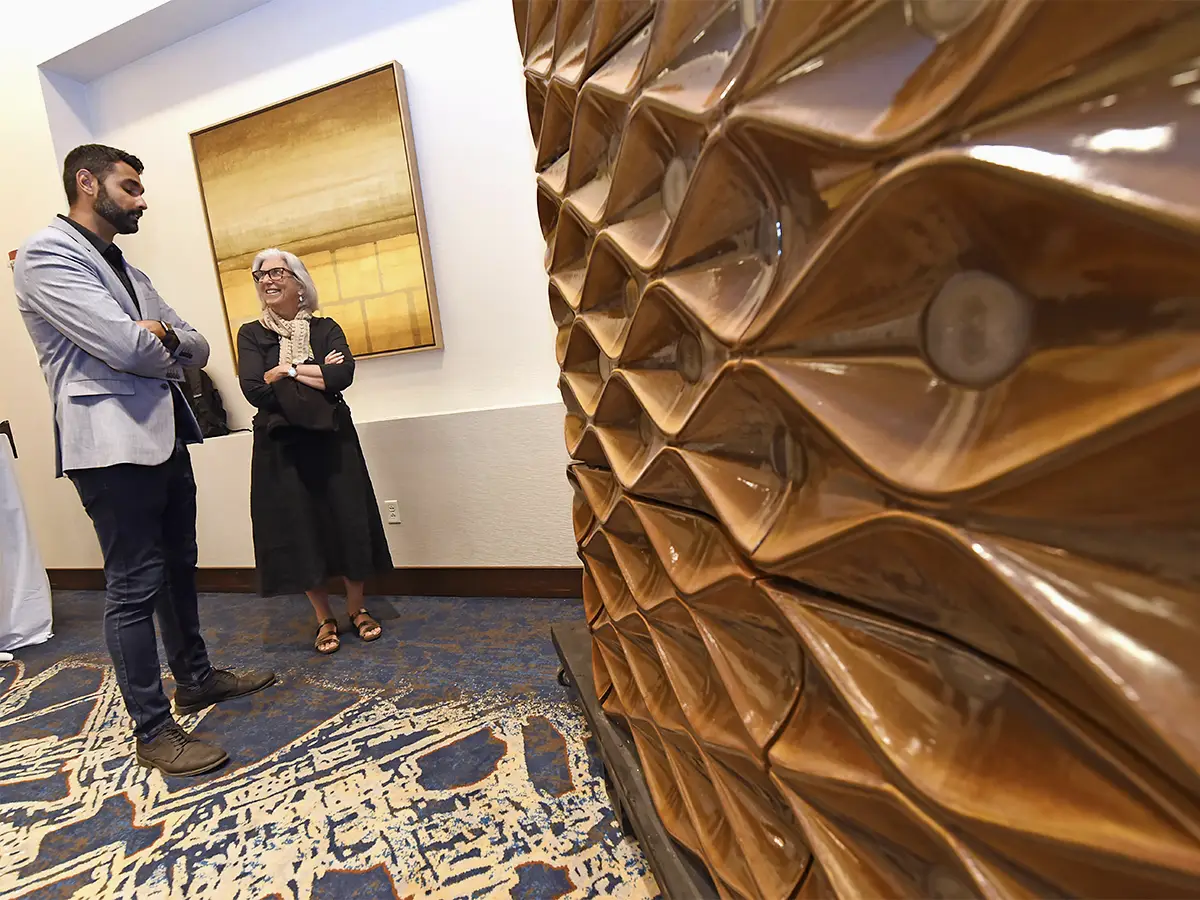
2
Boston Valley Terra Cotta CEO John Krouse presents assemblies from past ACAW Workshops (1); Orel Samson of Allied Properties REIT and Seldorf Architects' Anne Lewison discuss ACAW 2023 teams assemblies on display (2). Photos © Dan Cappellazzo, 2023
Buffalo is of course no stranger to architecture of great scale and ambition; the works of Louis Sullivan, Frank Lloyd Wright, and Henry Hobson Richardson, among others, dot the landscape of New York’s second-largest city. Boston Valley Terra Cotta, formerly Boston Valley Pottery, was purchased by the Krouse family in 1981 and shifted gears into the production of architectural components, namely for facade restoration—many of its earlier projects included the repair of local landmarks such as Sullivan’s Guaranty Building and Buffalo City Hall. Over the last decade, in collaboration with the University at Buffalo School of Architecture and Planning, namely their Sustainable Manufacturing and Advanced Robotic Technologies lab, Boston Valley has incorporated the latest in digital design and fabrication technologies into its industrial processes.
The professional teams present at this year’s ACAW were, for the most part, composed of paired-up architects and engineers, and featured familiar faces and new attendees. Notably, the workshop featured six academic teams, a significant expansion from years past, which, according to Carnegie Melon University Head of Architecture and workshop organizer Omar Khan, is a result of growing interest in ceramics within architectural programs, especially in the area of 3D printing.
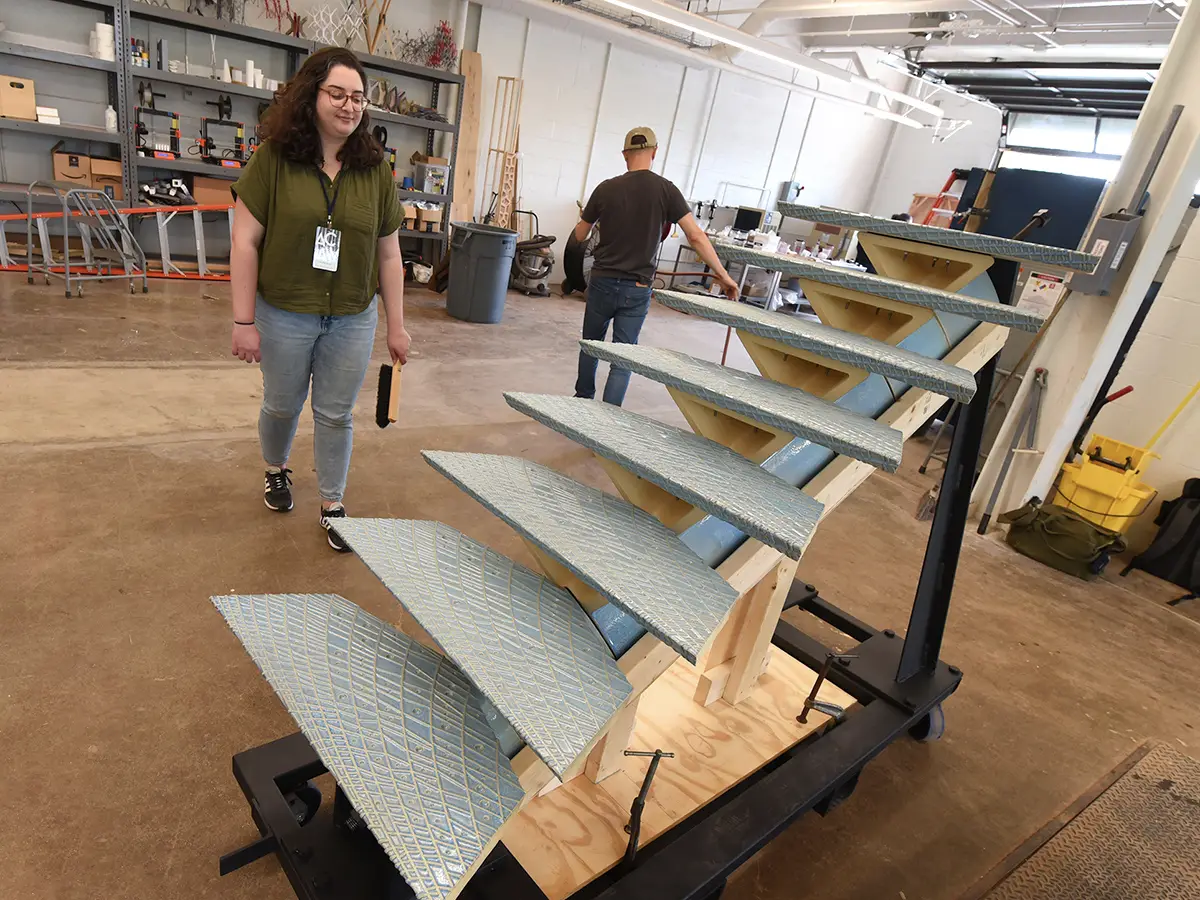 3
3
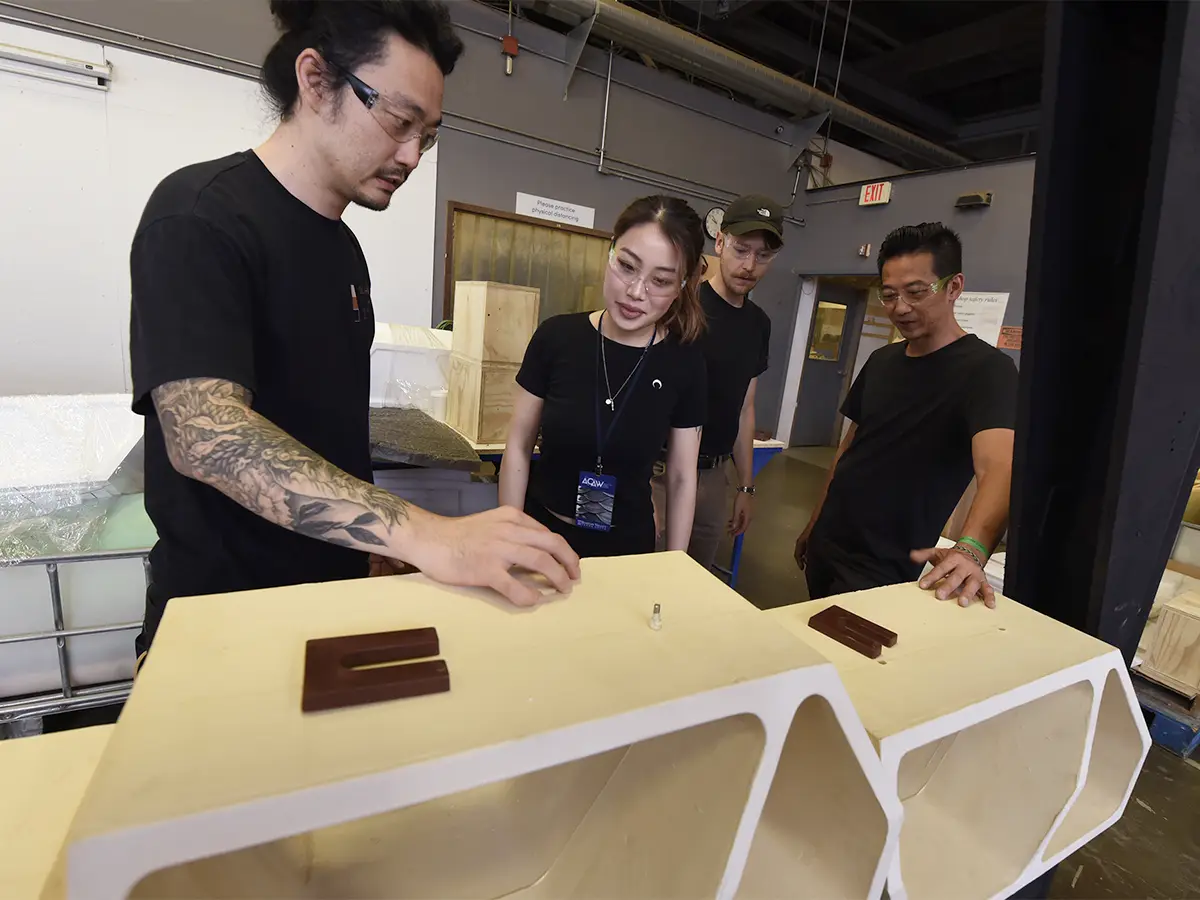 4
4
Lila Sferlazza, associate at Pickard Chilton, led the team with Magnusson Klemencic Associates to create a feature stair for their assembly (3); Stan Su returned to ACAW for a third time to lead the RIOS team's modular wall concept (4). Photos © Dan Cappellazzo, 2023
This year’s participants included the University of Southern California, University of Waterloo, Syracuse University, the Architectural Association, Carnegie Mellon University, and University at Buffalo. “Maintaining six academic programs every year would be ideal as their work brings a fresh perspective that is a bit more experimental and also provides us with an opportunity to support emerging pedagogies at these institutions,” noted Khan.
The prototypes were conceptually developed in the months leading up to the workshop and featured exciting applications of the material. For example, New Haven, Connecticut–based Pickard Chilton and Seattle’s Magnusson Klemencic Associates drew upon a series of precedents, such as the work of Rafael Guastavino, to develop a terra-cotta stairwell supported by a post-tensioned spine, that, in its glazing and finish, resembles something of a mix between a scrimshaw whalebone and cellular structure. Or take the rainscreen designed by Selldorf Architects and facade consultant Socotec, that, using parabolic strengthening and other measures, saw an approximately 60 percent reduction in typical panel weight. The prototype also experimented with the use of industrial waste such as slag as a recycled material for both terra-cotta and glazing.
ZGF Architects’ New York office, in collaboration with LERA Consulting Structural Engineers, worked on a modular system, suitable for rainscreen or sunshade use, or even as a decorative display, of glazed and ribbed uniform terra-cotta units mounted on a rod system that is configurable at a full 360 degrees. Los Angeles-based CO Architects held an internal design competition for their prototype, and ultimately looked towards origami’s multifaceted folds as inspiration. The result is a system of glazed and plain surfaces suspended over vertically oriented tension rods. HGA worked with Denver-based facade engineering firm Studio NYL to design a rainscreen system of terra-cotta planks, that, in their finish, resemble something of a high-design bush-hammered facade.
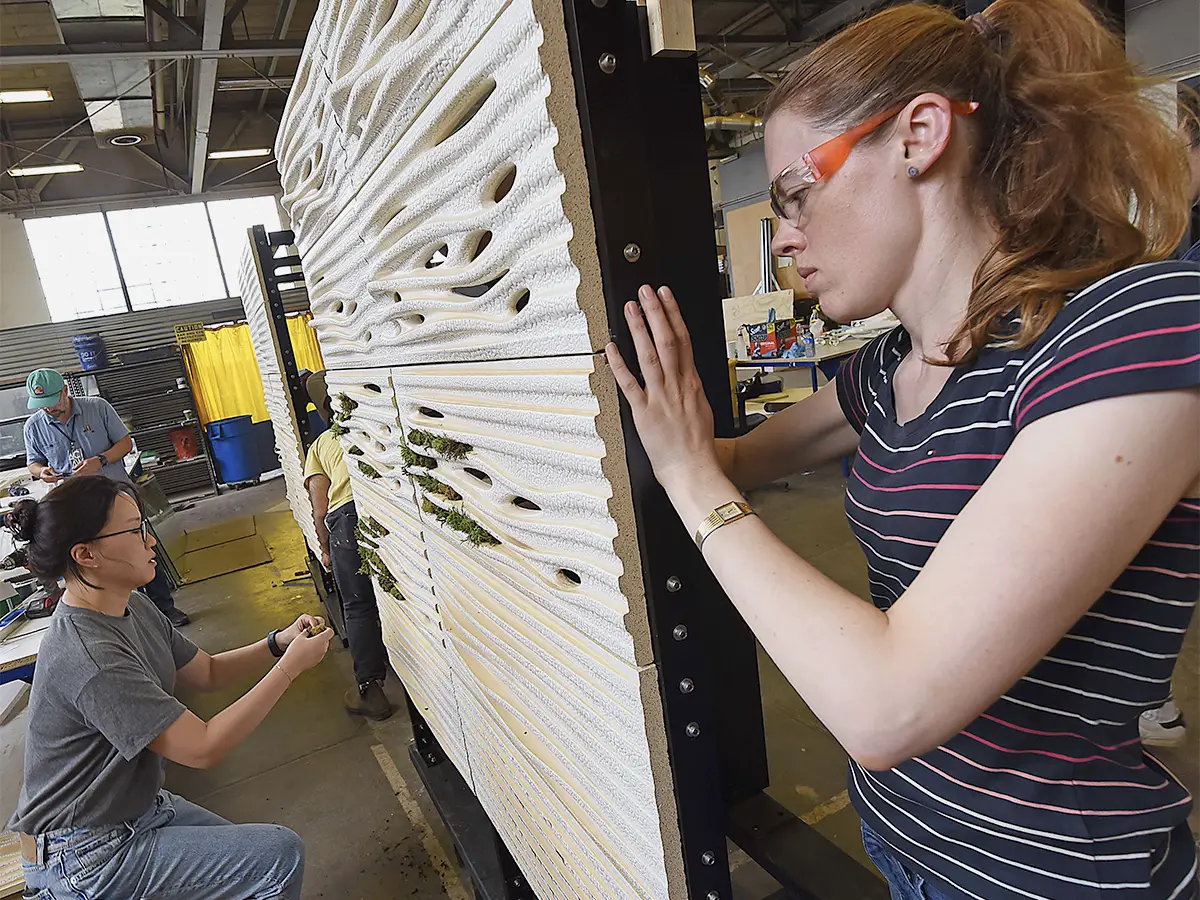
Henning Larsen, Thornton Tomasetti, and Innovation Glass teamed to explore the use of moss on a unitized terra-cotta curtain wall system. Photo © Dan Cappellazzo, 2023
The prompt for this year’s workshop was biophilic design, and several participating firms incorporated plantings within their prototypes. L.A.-based RIOS, with the support of engineer ARUP, unveiled a hybrid block-and-rainscreen system that can be fitted with a series of planter trays. The New York office of Danish architecture firm Henning Larsen, in a pairing with engineer Thornton Tomasetti and facade fabricator Innovation Glass, explored a crackle-glazed sunscreen with alluvial grooves capable of supporting moss growth. And Eric Parry Architects, with collaborating facade engineer FMDC, developed a fish scale-like rain screen of extruded terra cotta finials, as well as high-gloss glazed soffit panels, for an ongoing project in London’s Salisbury Square.
What can we expect from the workshop in the years ahead? “I look forward to potentially researching how the prototypes’ mechanical hardware interfaces with the ceramic components to more effectively manage tolerance issues between different materials and processes,” concluded Kansas City–based glazing and ceramicist specialist Andy Brayman. “Additionally, we can see further growth in the offering of specialty glaze finishes; in particular, there are several iridescent glazes under development in my own experimental lab, which could be offered at the factory’s larger kilns.”
Let’s see what the future has in store for this industrious corner of New York.



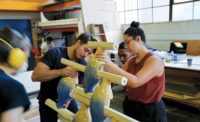
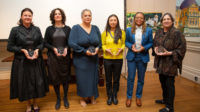
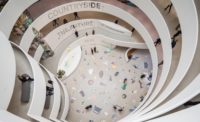
Post a comment to this article
Report Abusive Comment